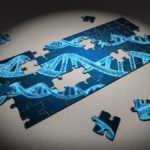
When I began this program (not that long ago) I knew nothing of research methodologies. Now while I am by no means an expect, I have opened myself up to the acceptance of other methods of study and the opportunity it affords me to reflect on myself and my future as an educator. This week I read up on Max van Manen’s use and explanation of Phenomenology, and read Meschachakanis, A Coyote Narrative: Decolonising Higher Education – prior to a visit by Dr. Shauneen Pete, who uses story-telling in her work.
Through all this, I have noticed one thing in my journey to further explore different research methodologies: I don’t really enjoy reading a strict quantitative research study with heavy statistical analysis of data. This of course surprises the science teacher in me who often stressed, from atop a soapbox, the importance of objective data.
To fully appreciate other methodological forms. I am constantly on the look-out for those different methods in my own interests, and stumbled upon this study during a very rudimentary search for some beginning data in the use of reflective practices:
A collaborative autoethnography study to inform the teaching of reflective practice in STEM
This is an autoethnographic study on the use of reflective practices by science teachers attempting to create a lesson plan for reflective practices for science students (wrap your head around that one!).
The authors found that creating a scaffolded, scientific method approach to reflective practices helped to “reduced skepticism around reflective practice as a non-scientific form of learning” in science teachers. The researchers knew they were walking an uphill battle to reduce the skepticism, they felt that collecting the reflections of the science teachers in the study would give a better picture of this battle. They collected 4 kinds of reflections; (1) self-reflections, (2) reflections on literature findings, (3) collaborative reflections and (4) the authors’ reflections on the STEM teachers’ reflections.
This was quite an exhaustive study, and it had some real moments for me personally, as the autoethnographic style allowed me to immerse myself as reader and see the comparable thoughts between the participants and my own inner dialogue. This amount and variety of data really allows the reader gets a more complex sense of the underpinnings of the topic and the context of the data.
In one participant’s reflection regarding how to best introduce reflective practice with students, they remark: “(P)itch it so that it is all about them (students) we can’t ask them “how do you feel?” without explaining why it is important.” This research methodology allows the researched to co-construct the study by bringing context into the research and helping to create a fully formed image of the study. As a result, the reader can relate to the data in a way that isn’t always possible with quantitative studies.
This source is also an amazing addition to my literature review pile, as it not only discusses my research topic, but it include reflections of teachers who are attempting to create reflective practice course work for their students – which may be what I intend to do in this course (I never said I had an original idea…)
Putting aside the fact that autoethnography is, from what I have gathered, still an emerging and not yet fully accepted method, I was able to move beyond the data of this article to challenge my own thinking on research methodologies.
What is my role as researcher in the classroom? What is it that am I looking at or examining? There is an underlying connection that is forming in my brain between research in the academic world and in as an educator. Before this brief summer, I would never have considered myself a researcher; but I am now recognizing that teaching (trying new techniques, assessments, activities) is playing the role of researcher and that to do so in an authentic, meaningful, and ethical way means the methodologies and structural approaches should be considered.
I am wondering if my research method as a teacher would be categorized as auto/ethnographic? It’s not phenomenological, and it is certainly neither fully qualitative nor quantitative. It involves reflective practice, contextualized situations, interpersonal interactions and a history of relationships that weave together to give me a stronger picture of my students, my class and my community.
Ethnography is a method that asks for both participation and reflection in the story and its wider meaning, that involves relations between researcher and the researched. When watching portions of Kitchen Stories by Bent Hamer, I considered this relation in the protagonists and thought How is this aspect similar to teaching? When one protagonist proclaims, “We sit up there on our pedestals and think we understand everything.” He is imploring all researches, teachers included, to build relationships for a deeper understanding.
With a slightly firmer grasp of a few qualitative research methodologies, I am left to further analyze my place from these methodological questions: What are the most appropraite techniques needed for collecting evidence to guide my practice?
In the broader sense, I have also changed my initial views, as a science teacher, on the importance of different methodologies for different purposes and fields. Measuring the effects of a new intervention in medicine or the physical properties of a new polymer no doubt require detailed and robust quantitative investigation. However, the variables, context and considerations of educational studies have more nuance than a five-point Likert scale can capture; more complexity than can be quantified alone.
As I venture deeper into a literature review of my own interests for this program, it is important for me now to consider how this knowledge affects what research I find for my master’s project – the types of research I will value and relate with in my search for clarity. The is hope also that I am better informed to ask researchable questions to guide the changes I want to see in my classroom, and be able to collect my own data to reflect on the success of those changes.
As my professor said in the first week of classes in Research Methodologies: “How do you walk your talk?”
Fall Falling GIF by Sam Jack Gilmore – Find & Share on GIPHY





